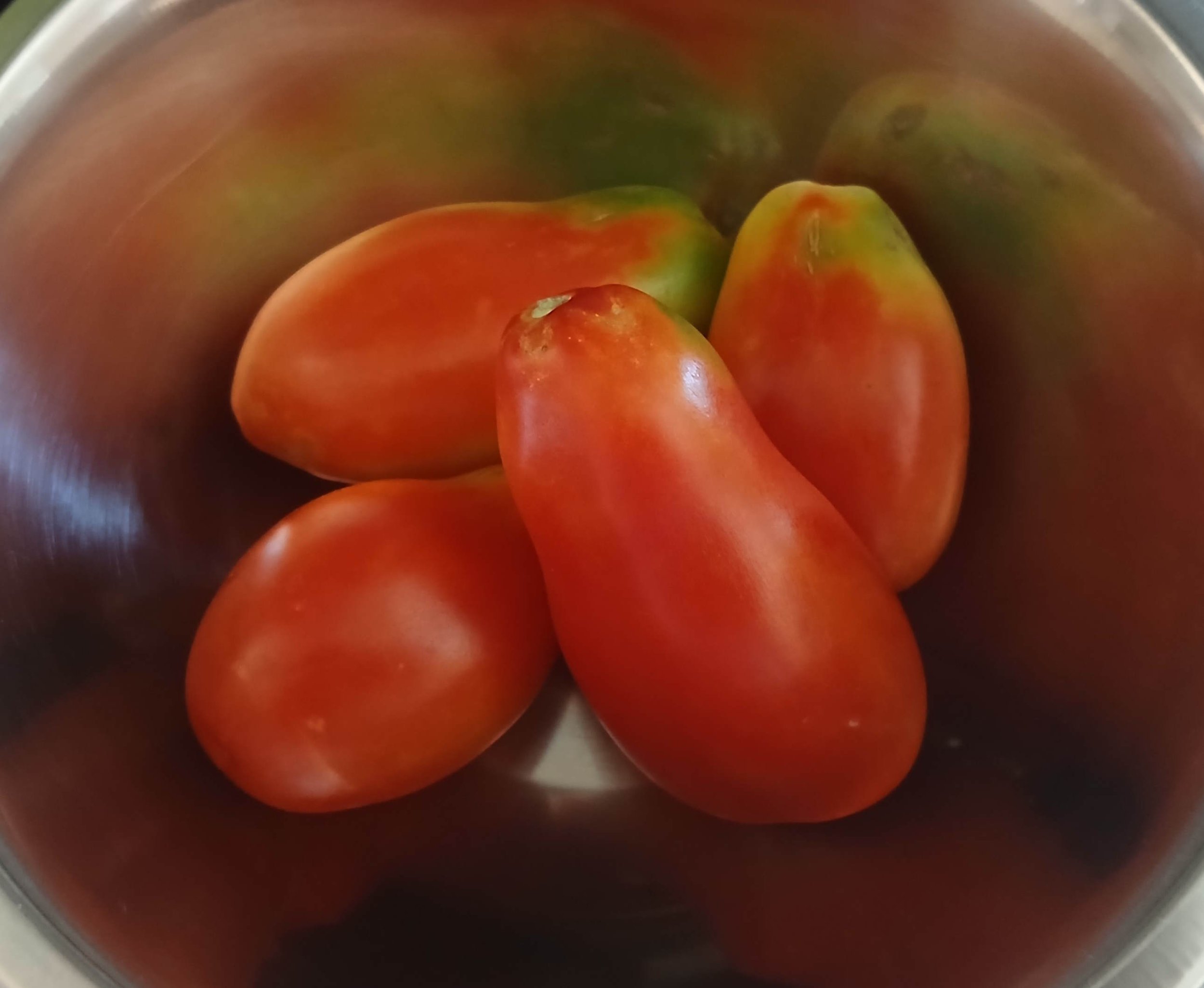
The Tomato
Nothing reminds me more of a perfect summer gathering than a fresh and tasty slicer tomato, a cool tear of just about any leafy green, and maybe an onion, pepper, pickle, etc., however they are incorporated. A driving force for this homesteading adventure has been the tomato. I love a slicer on a burger, chicken breast sandwich, or even with fish. The problem with them is they are only good for as long as they are in season. Sauce tomatoes on the other hand, can give you nearly identical flavor year-round with preservation. Even “ketchup” tastes better when made from home-preserved tomatoes, while avoiding industrial preservatives.
Romas are over produced and over sold and the ones of late lack in flavor. I turned to canned San Marzano tomatoes for a certain recipe and have been in love ever since. I have bought the official Denominazione di Origine Protetta(DOP) kind, the fake kind (Romas, or some other variety, in disguise) and the “pretty close”: right variety, wrong growing zone. While the DOP versions were the best tasting, I found the “pretty close” ones to be the most feasible to grow myself, especially if I wanted that level of flavor all year.
I had great luck growing Mortgage Lifters or some other beefy style tomatoes in a garden 10 years ago. I should be able to duplicate that process, or so I thought.
The problem with growing tomatoes in Oklahoma is the heat, at least this year. I was ill prepared for the Oklahoma wind, sun, and heat. I started the tomatoes inside a bit late, end-of April. I thought I could rescue them with a cheap hoop style greenhouse (Greenhouse 1), but several Oklahoma factors led to that greenhouse not lasting very long, even with a modest size swamp cooler. A more durable and tomato accommodating structure must be built, as well as other features to combat the Oklahoma heat waves.
Greenhouse 2
To combat each of the problems I had with the previous attempt, I designed GH2 to minimize absorbed Summer solar energy by using Bronze Polycarbonate panels for the roof which have a lower Solar Heat Gain Coefficient (SHGC) and lower light transmission of 0.58 and 42% respectively. The side panels are clear but still have UV and light protection having values of 0.74 and 79% respectively. The roof panels should limit the amount of solar energy absorbed when the sun angle is high in the sky, such as Summer. The side panels will allow more solar energy to be absorbed when the sun angle is low in the sky, such as Winter.
The first draft of Greenhouse 2 was a tad oversized and would require a bit more capital than I had available. After a few redesigns and considering the tiny yard in which it would be placed, I finally decided on a 16’ x 40’ x ~13’ tall Gable-style structure. This is where permaculture gardening comes in. Until I gather enough data from the Greenhouse 2 experiment, the tomato will also be outside in a sheltered-ish area. I will post a picture/drawing/draft here when I have a better idea how it’ll all run together.
While I await cooler weather to finish the greenhouse, so too shall my quest for the tomato.